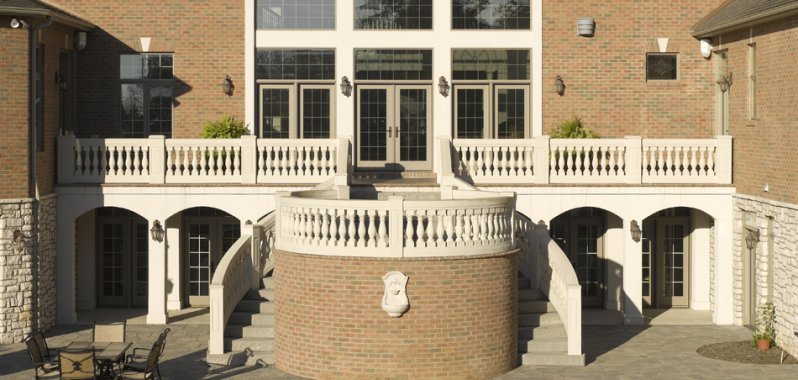Exploring the Beauty and Functionality of Balustrade Architecture
Balustrade architecture stands as a testament to the marriage of beauty and functionality in the realm of design. From ancient civilizations to modern-day marvels, balustrades have adorned structures, adding both aesthetic appeal and structural support. In this comprehensive guide, we delve deep into the world of balustrade architecture, exploring its history, evolution, design elements, and practical applications.
Understanding Balustrade Architecture
What Are Balustrades?
Balustrades are architectural features consisting of a series of balusters, handrails, and sometimes newel posts. They are commonly found along staircases, balconies, terraces, and other elevated areas, serving both decorative and functional purposes.
The History of Balustrades
Balustrades have a rich history dating back to ancient civilizations. They were prominently featured in Greek and Roman architecture, where they adorned temples, public buildings, and private residences. Over time, balustrade designs evolved, incorporating elements of different architectural styles and materials.
Types of Balustrades
Balustrades come in various types, each offering unique aesthetics and functionality. Common types include:
- Wooden Balustrades: Classic and versatile, wooden balustrades are often used in traditional and rustic designs.
- Metal Balustrades: Sleek and modern, metal balustrades are popular in contemporary architecture.
- Glass Balustrades: Elegant and transparent, glass balustrades add a touch of sophistication to any space.
- Stone Balustrades: Durable and majestic, stone balustrades are often seen in grand architectural projects.
Design Elements of Balustrades
Baluster Designs
Balusters, the vertical posts of a balustrade, come in a variety of designs, including:
- Plain Balusters: Simple and understated, plain balusters offer a clean and minimalist look.
- Turned Balusters: Elaborately turned or twisted balusters add a sense of intricacy and craftsmanship.
- Fluted Balusters: Vertical grooves or flutes on balusters create a sense of texture and visual interest.
- Decorative Balusters: Ornate designs featuring motifs, scrolls, or carvings make a bold statement in design.
Handrail Styles
Handrails play a crucial role in providing support and safety. Common handrail styles include:
- Round Handrails: Smooth and ergonomic, round handrails are comfortable to grip and navigate.
- Square Handrails: Modern and sleek, square handrails complement contemporary design aesthetics.
- Curved Handrails: Graceful and flowing, curved handrails add a sense of elegance and fluidity to spaces.
Newel Post Variations
Newel posts, the larger posts at the ends or corners of a balustrade, can vary in design:
- Box Newels: Solid and substantial, box newels offer a strong visual anchor in balustrade designs.
- Turned Newels: Similar to turned balusters, turned newels feature intricate twists and curves.
- Fluted Newels: Vertical flutes or channels on newel posts create a sense of depth and dimension.
Practical Applications of Balustrade Architecture
Residential Settings
In residential settings, balustrades are commonly used along staircases, balconies, and decks. They enhance safety while adding style and character to homes. Wooden balustrades are popular for their warmth and traditional appeal, while glass balustrades create a contemporary and open feel.
Commercial Spaces
Balustrades are also prevalent in commercial spaces such as hotels, malls, and office buildings. Here, they serve both functional and decorative purposes, guiding foot traffic, enhancing safety compliance, and contributing to the overall design aesthetic.
Public Installations
In public spaces like parks, plazas, and civic buildings, balustrades play a role in defining boundaries, creating visual interest, and ensuring safety for visitors. Stone balustrades, with their durability and timeless elegance, are often chosen for public installations.
The Evolution of Balustrade Architecture
Traditional Styles
Traditional balustrade designs often feature intricate details, ornamental motifs, and rich materials like wood and wrought iron. These styles are reminiscent of classical architecture and historical periods, adding a sense of nostalgia and charm to spaces.
Modern Innovations
In contrast, modern balustrade designs prioritize clean lines, minimalist aesthetics, and innovative materials such as glass, stainless steel, and aluminum. These designs focus on functionality, transparency, and contemporary elegance, catering to modern architectural tastes.
Balustrades in Landscape Design
Balustrades play a significant role in landscape design, especially in gardens, terraces, and outdoor living spaces. They define boundaries, create visual focal points, and enhance the overall atmosphere of outdoor environments. Balustrades made from natural materials like wood or stone blend harmoniously with natural surroundings, while glass balustrades offer uninterrupted views and a seamless connection between indoor and outdoor spaces.
Maintenance and Care of Balustrades
Proper maintenance is essential to ensure the longevity and aesthetics of balustrades. Regular cleaning, inspection for damage or wear, and timely repairs are crucial in preserving their beauty and functionality. Depending on the material and design, specific care guidelines should be followed to keep balustrades in optimal condition.
Embrace the beauty and functionality of balustrades in your next architectural project with MeltonClassics, a trusted name in premium balustrade solutions. With their expertise and craftsmanship, MeltonClassics brings timeless elegance and unparalleled quality to every balustrade installation. Discover the artistry of balustrade architecture and elevate your spaces to new heights of design excellence.
Conclusion: Embracing the Timeless Elegance of Balustrade Architecture
In conclusion, balustrade architecture embodies a timeless elegance that transcends architectural trends and styles. From the grandeur of classical balustrades to the sleekness of modern designs, balustrades continue to captivate with their beauty, functionality, and versatility. As we embrace the rich history and evolution of balustrade architecture, let us appreciate its enduring appeal and transformative impact on the spaces we inhabit.
Read More Articles:
Angular vs Vue: Which Framework to Choose in 2024?
Heading towards a new and creative way of learning.
A shining light in the darkness of extreme religious beliefs.
The Utilization of Drones for the Transportation of Vital Organs Across Urban Landscapes





